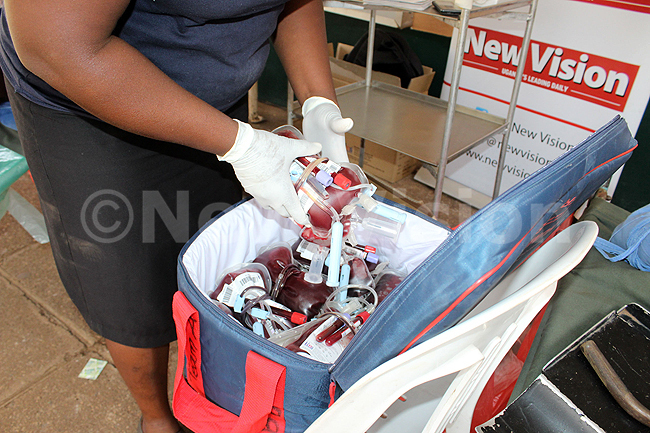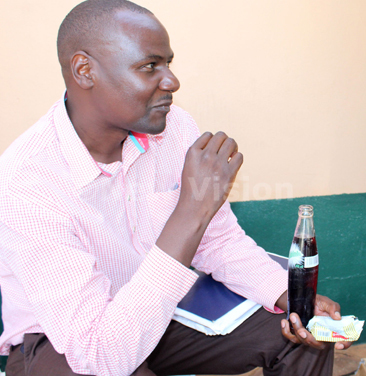What you should know before you donate blood
The donor should not have chronic illnesses such as diabetes, hypertension and epilepsy. They should be weighing above 50kg, aged 17 years and above and should neither be menstruating nor pregnant.
PIC: An employee of UMEME donating blood at Vision Group offices. (Credit: Agnes Kyotalengerire)
CORPORATE SOCIAL RESPONSIBILITY
KAMPALA - According to Richard Karugaba, the blood donor recruiter at Nakasero Blood Bank, one must have enough blood to donate. To determine the level of one's blood, a haemoglobin level test is done.
"We use a specific gravity system where Copper II Sulphate solution is used to determine one's hemoglobin (blood) level," he explains, adding that it is important to know the donor's haemoglobin level to avoid causing anemia in case their blood level is low.
The required hemoglobin level for women is 12.5gm per deciliter and 13.5gm per deciliter for men.
Additionally, the donor should not have chronic illnesses such as diabetes, hypertension and epilepsy. They should be weighing above 50kg, aged 17 years and above and should neither be menstruating nor pregnant.
Beteth Tukahirwa, a nursing officer at Nakasero Blood Bank, says blood can survive for up to 12 hours under room temperature and last for up to 42 days under refrigeration. However, there are medical reports indicating that stored blood degrades in various ways long before that six-week limit and some research suggests that the changes may be harmful to patients who receive old blood.
Before the blood is used, each unit is screened for HIV, Hepatitis B and C, syphilis, sickle cells and malaria. It is also checked for the blood group. The donors receive their results after a week, Tukahirwa explains.

Blood should be well-stored to preserve it for future use. (Credit: Agnes Kyotalengerire)
Boosting blood level
Haemoglobin is the protein molecule in red blood cells that carries oxygen from the lungs to the body's tissues and returns carbondioxide from the tissues back to the lungs. The word haem means iron and globin means protein.
Karugaba says one should eat foods rich in iron. The best source of iron is animal-based foods, especially red meat, liver and offal. Iron is also found in many plant-based foods such as green vegetables for example, spinach, broccoli, lentils and beans.
Background of the drive
Recently, Vision Group joined the blood donation drive at their offices on First Street Industrial Area, Kampala and over 170 units of blood were collected.
Joseph Banyu, the corporate social responsibility co-ordinator at Vision Group said the drive was aimed at creating awareness on the importance of donating blood and encourage the public to regularly donate blood. This would ensure sufficient blood supply in health care service delivery.
According to World Health Organisation, Uganda needs about 340,000 units of blood annually although approximately 200,000 units are collected, which creates shortages of blood across different health service centres.

According to medics, everyone who donates blood should take a refreshment after. Soda is most preferred because it is easy to store and transport.(Credit: Agnes Kyotalengerire)
Why soda and biscuits for donors?
There is a misconception that donors are always given soda and biscuits to entice them to donate blood. However, Karugaba, who equates donating blood to an exercise, explains that the glucose mix; soda and biscuit is given as a refreshment.
"We choose soda because it has a long shelf life. But anything refreshing for example, fresh fruit juice or water, can do," Karugaba affirms, adding that it is important that after the donation exercise, one rests for about five minutes while they take their refreshment.